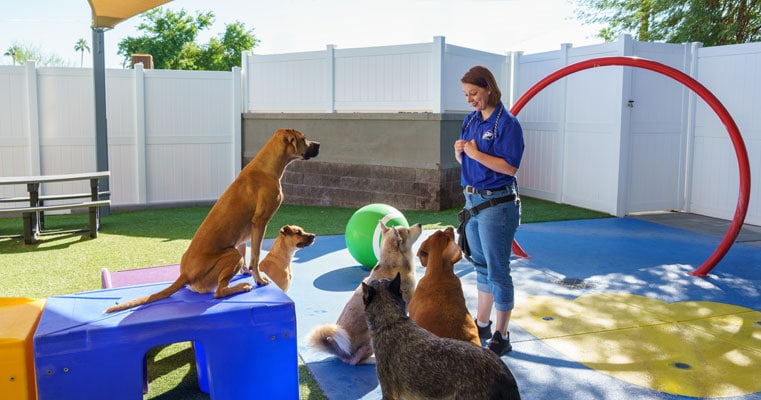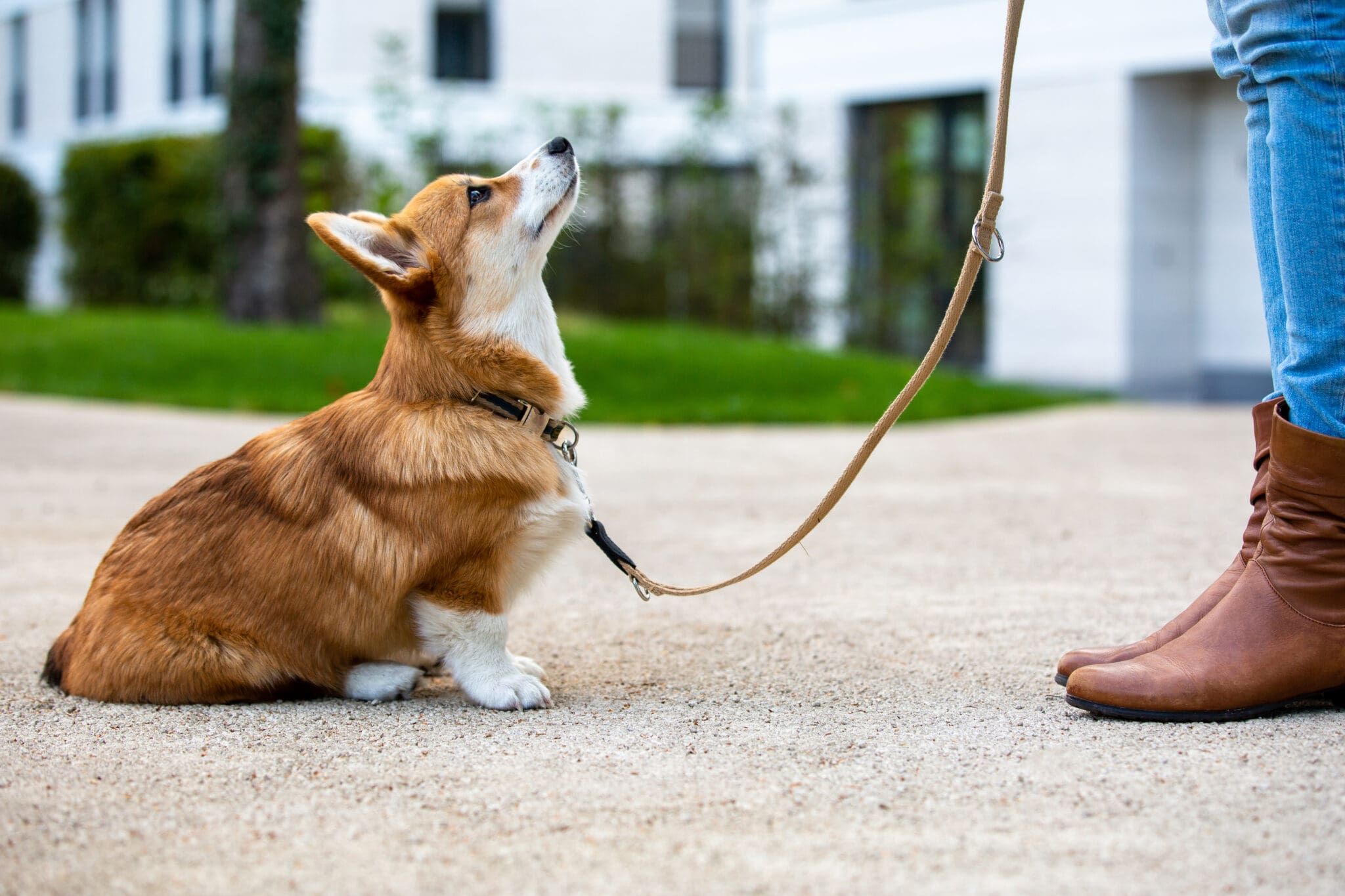How Dog Training Can Improve Your Pet's Quality of Life and Behavior
Leading Dog Educating Techniques Every Proprietor Should Know

Positive Reinforcement Techniques
Utilizing favorable support strategies is necessary for effective pet training, as it fosters a trusting bond between the instructor and the pet dog. This method concentrates on fulfilling preferable behaviors as opposed to punishing undesirable ones, developing an environment for learning. Benefits can include deals with, praise, or play, which inspire pet dogs to repeat the habits that make them these rewards.

Moreover, this technique enhances the canine's excitement for training sessions. When dogs connect training with favorable experiences, they are more involved and responsive. Past prompt habits alteration, positive support encourages a joint connection between the canine and instructor, decreasing anxiousness and anxiety
To optimize efficiency, it is important to deliver rewards promptly, making certain the dog connects the habits with the reinforcement. Fundamentally, positive reinforcement methods not only yield better-trained pet dogs however likewise advertise a harmonious collaboration in between pet dog and proprietor.
Remote Control Training Approach
The clicker training technique is a very efficient method that constructs upon the concepts of positive reinforcement by adding a distinctive audio to mark wanted actions. This technique makes use of a little handheld device that generates a clicking noise, enabling trainers to interact with their dogs in a clear and immediate fashion. When a canine performs a habits that the proprietor wants to motivate, the remote control is activated, complied with by a benefit, commonly in the type of treats or appreciation.
The key to effective clicker training depends on consistency and timing. It is vital to click at the specific minute the desired actions occurs, guaranteeing that the pet dog links the noise with the action and the succeeding reward. This approach not only improves interaction but additionally promotes a more powerful bond in between the proprietor and the pet dog, as it motivates involvement and communication throughout training sessions.
Remote control training can be used to a variety of commands and behaviors, from standard obedience to more complicated methods. Its adaptability and performance make it a preferred strategy among expert trainers and pet dog proprietors alike, leading the way for a trained and responsive canine companion.
Chain Training Basics
Effective chain training is vital for guaranteeing a enjoyable and risk-free strolling experience for both pets and their owners. Dog training. Chain training should start early and be approached with patience and uniformity. Beginning by see here picking an appropriate leash and collar or harness. A flat collar may benefit some pet dogs, while others may gain from a harness that decreases pulling.
Introduce your canine to the chain progressively, permitting them to explore it in a comfy atmosphere. This entails fulfilling your canine for walking beside you instead than pulling in advance.
If your pet dog begins to pull, quit strolling quickly. Additionally, practice various strolling environments to help your pet dog adjust to diversions.
Regular method will certainly solidify your canine's understanding of chain rules. Bear in mind that leash training is a recurring procedure; patience and uniformity will certainly generate the most effective results, fostering a favorable experience for both you and your canine buddy.
Socializing Approaches
Socializing is a crucial aspect of pet training that should preferably begin during puppyhood yet can be helpful at any kind of age. Efficient socialization helps dogs develop confidence and minimizes the probability of behavioral problems. To implement successful socializing methods, reveal your pet dog to a range of environments, people, and other pets.
Begin with controlled settings, such as puppy courses or organized playgroups, where young pets can interact safely. Gradually introduce your pet dog to new experiences, including different noises, surface areas, and activities. Make certain these experiences are positive and satisfying to establish a feeling of security.
For adult pet dogs or those lacking exposure, begin with low-stress circumstances. Short, favorable communications with pleasant human beings and tranquil dogs can develop favorable associations. Utilize deals with and appreciation to reinforce desirable behaviors during these experiences.

Uniformity and Persistence
Identifying the relevance of consistency and perseverance in canine training is vital for accomplishing long-term outcomes. Training a pet is a gradual process that needs an organized technique and unwavering internet dedication from the owner. Each command or habits should be enhanced continually to help the pet understand what is anticipated of them. Inconsistent training can bring about complication, making it difficult for the pet to understand commands or actions, ultimately impeding development.
Canines, like people, learn at their very own speed. This fosters a relying on connection between the pet dog and proprietor, urging a more ready and passionate student.
To grow consistency and perseverance, develop a regular training routine, make use of the exact same commands, and make sure that all family participants apply the exact same training concepts - Dog training. By doing so, you develop a stable environment favorable to learning, permitting your pet dog to create and flourish right into a mannerly buddy
Conclusion
Finally, effective pet Read Full Article training techniques, such as favorable support, remote control training, and proper chain training, are essential for cultivating a healthy and balanced owner-dog connection. Additionally, executing socializing techniques and preserving uniformity and patience throughout the training procedure contributes substantially to a dog's overall well-being. By integrating these methods, pet proprietors can help with the growth of well-adjusted, obedient family pets, ultimately boosting the lifestyle for both the dog and the proprietor.
Among the most prominent methods are favorable support, clicker training, and leash training, each offering special benefits that contribute to a mannerly dog. As we discover these basic strategies, it becomes evident that mastering their nuances can dramatically impact the training experience and the dog's general behavior.Utilizing positive reinforcement techniques is vital for reliable canine training, as it fosters a trusting bond between the trainer and the canine.In final thought, effective dog training techniques, such as positive support, remote control training, and correct chain training, are vital for promoting a healthy and balanced owner-dog partnership. By integrating these approaches, pet dog owners can assist in the growth of well-adjusted, loyal pets, eventually enhancing the quality of life for both the owner and the canine.